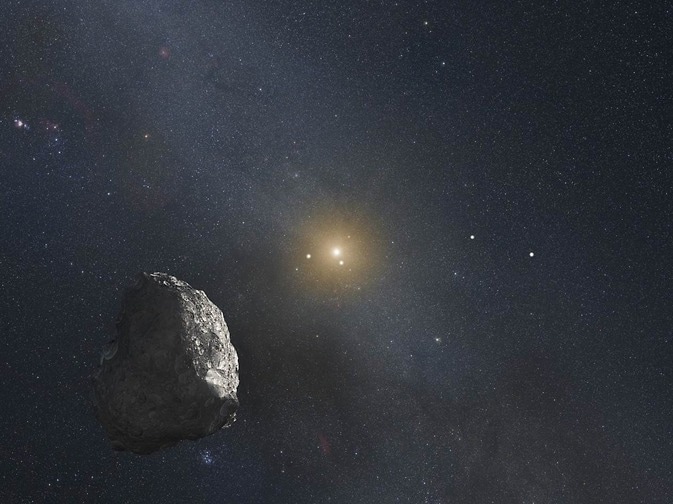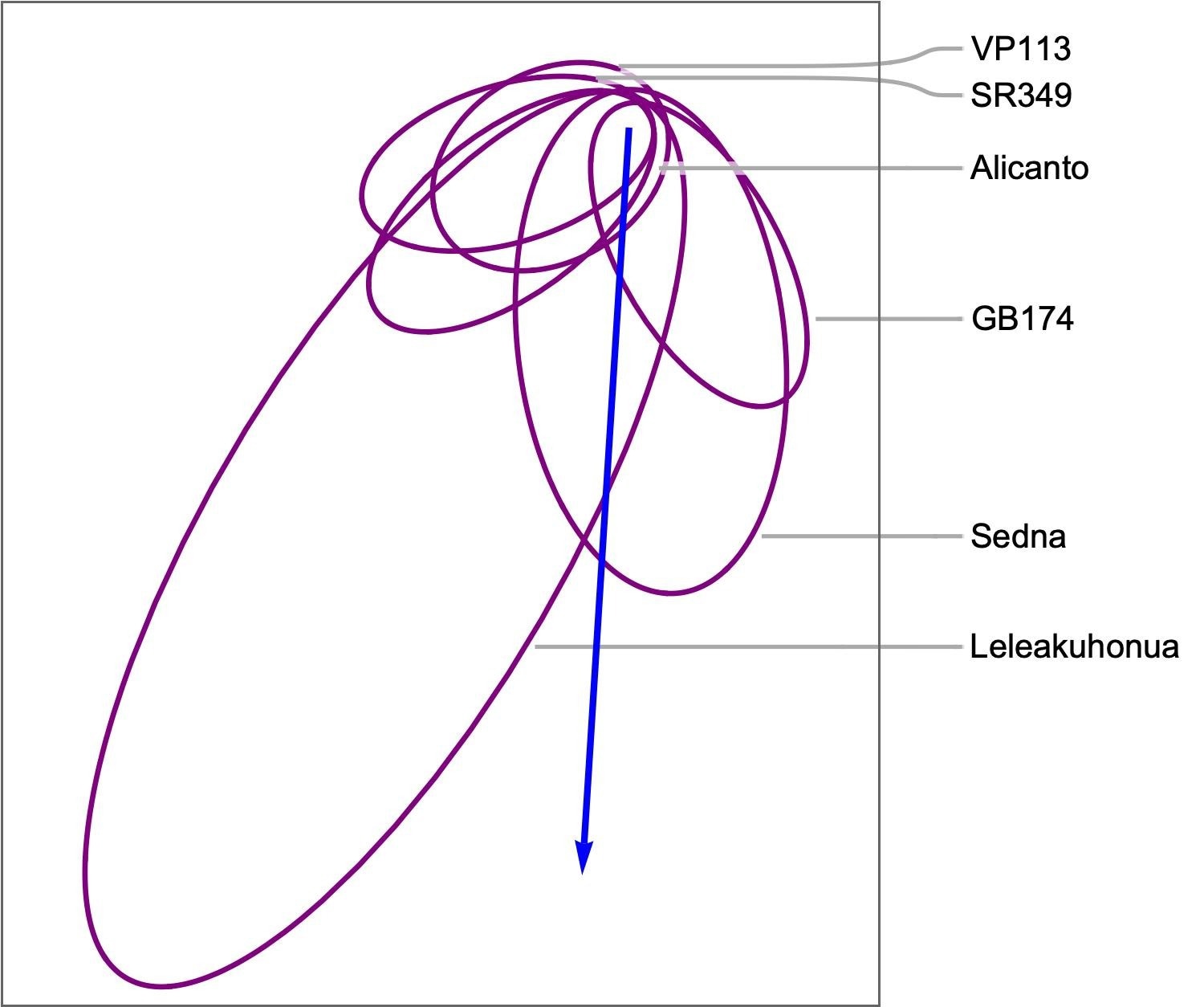In a new feature on AZoQuantum, we speak with Theoretical Physicists Kate Brown and Harsh Mathur about their research investigating Modified Newtonian Dynamics and its implications for the Ninth Planet theory.
What led you to become involved with this research?
Many different lines of evidence have led to the hypothesis that most of the matter in the Universe is dark: it does not emit, absorb or reflect light, and it is of an unknown nature. The dark matter model has had impressive successes in explaining cosmological observations ranging from the Cosmic Microwave background (remanent radiation from the big bang) to the large-scale distribution of galaxies and clusters of galaxies.
However, despite decades of searches, dark matter has not been directly observed. On the other hand, the modified gravity theory MOND (on which more below) has some impressive successes in explaining the dynamics of galaxies without invoking the existence of dark matter. Understanding the nature of dark matter - or developing a viable alternative to the dark matter model - is one of the big problems of science today.
We were led to this research by the realization that MOND, which was developed to explain the dynamics of galaxies, could also be tested on the much smaller scale of the solar system.
Could you explain in simple terms how MOND (Modified Newtonian Dynamics) differs from traditional Newtonian gravity?
In the 1970s, Vera Rubin showed that stars in galaxies were rotating in a manner that was incompatible with what one would expect based on the gravitational influence of all the visible matter in the galaxy. The motion appeared to be dominated by the gravitational pull of a large amount of unseen mass.
This was the first compelling evidence for the dark matter hypothesis: that galaxies contain about five times more dark matter than visible matter. As noted above, dark matter is a hypothetical form of matter that has gravitational effects but does not emit, absorb, or reflect light, so it remains unseen.
MOND is an alternative solution to the problem of galaxy rotation that was developed by the Israeli physicists Mordehai Milgrom and Jakob Bekenstein. MOND proposes that Newton's law of gravity is accurate but only up to a point - when the gravitational acceleration predicted by Newton's law becomes small enough then the more accurate predictions of MOND should be used instead. The MOND acceleration scale is tiny by earthly standards (one hundred billionth of one "g", the amount of gravitational acceleration near the surface of the Earth). But in the outer rim of galaxies the acceleration of stars predicted by Newtonian gravity is small enough. When MOND is applied it leads to the observed rotational behavior of galaxies.
The observational success of MOND on galactic scales and the absence of any direct observations of dark matter are the reasons that some scientists consider MOND an alternative to dark matter.
What inspired you to explore the connection between MOND and the anomalies observed in the outer solar system?
The Kuiper belt consists of thousands of predominantly icy objects, of which Pluto is the best known. Most known Kuiper belt objects are between 30 to 50 au which is comparable to the distance of the giant planet Neptune from the Sun. (1 au is the distance between the Earth and the Sun).

Image Credit: NASA, ESA and G. Bacon (STScI)
However, a handful of extreme Kuiper belt objects are known that are at a greater distance even on closest approach to the sun, and they recede to distances of hundreds or even thousands of au at the outermost extremity of their elongated orbits.
Surprisingly, the elongated orbits of the extreme Kuiper belt objects are roughly aligned. Moreover, some of them have orbits that carry them far out of the ecliptic plane (most solar system objects, including classical Kuiper belt objects, lie in a common plane called the ecliptic). These anomalies in the orbits of the extreme Kuiper belt objects are the basis of the Planet Nine hypothesis: that there is a planet five to ten times the mass of the Earth that lies at around 500 au from the sun; the gravitational influence of this hypothetical planet can be shown to lead to the observed anomalies in the orbits of the extreme Kuiper belt objects.
The sun is the dominant gravitational influence in the solar system. The acceleration due to solar gravity drops below the MOND scale at a distance of about 7000 au (1 au is the distance between the Earth and the sun). Although this is an enormous distance, it is within the solar system, and a handful of known extreme Kuiper belt objects swing out to comparable distances from the sun.
Thus, if MOND gravity is valid, it should have observable effects on the orbits of the very objects whose anomalous orbits are the basis of the planet nine hypothesis. Realizing this first got us excited about exploring the possible connection between MOND and the anomalies observed in the outer solar system. However, it took us by surprise when we discovered that MOND is also capable of explaining the observed anomalies and is an alternative to the Planet Nine hypothesis.
Could you elaborate on the specific predictions made by MOND regarding the orbits of objects in the outer solar system and their alignment with the galaxy's gravitational field?
At the distance of the extreme Kuiper belt objects, the dominant gravitational influence is the sun in Newtonian gravity. However, in MOND, the gravitational field of the galaxy also produces effects analogous to the tides produced on Earth by the moon. These tidal forces tend to align the elongated orbits of the extreme Kuiper belt objects with the direction towards the center of the galaxy and also to twist the orbits out of the ecliptic plane.

Orbits of six extreme Kuiper belt objects (in purple) and the direction to the center of the galaxy (blue arrow)
How did you go about testing your hypothesis?
Both the Planet Nine hypothesis and MOND predict that the orbits of the extreme Kuiper belt objects should be aligned. However, MOND predicts, in addition, that the alignment should be with the direction towards the center of the galaxy. That the orbits were aligned was previously known - it was the basis for the Planet Nine hypothesis - but we did not know if this aligned with the direction of the galactic center when we started our research.
In order to test the alignment with the galaxy, we had to access orbital data for the extreme Kuiper belt objects and plot the orbits and the direction to the center of the galaxy in the same diagram. Remarkably, the predicted alignment did occur!
Why might we not have discovered a ninth planet in our solar system before now if it were to exist?
Planet Nine, if it exists, would be at the threshold of observability with existing telescopes. This is because of its great distance from the sun and it could have a quite non-reflecting surface - many Kuiper belt objects do. If it is in the direction towards the center of the galaxy it becomes more difficult to pick up against the bright background. Also, the telescope needs to be looking in the right direction - we do not know exactly where to look for it.
What are the implications of these results for our understanding of fundamental physics?
They raise the stakes in the search for Planet Nine. The outer solar system is a good arena to study MOND. If detailed predictions of MOND in the outer solar system are borne out it will burnish the case for MOND as a serious alternative to dark matter.
Furthermore, it will provide compelling motivation to think more deeply about gravity because MOND is not compatible with Einstein's theory of gravity, which would then need to be modified suitably. If MOND is the correct theory of gravity it will also force us to rethink a great deal of the history of the solar system. On the other hand, if these predictions do not work, and Planet Nine is discovered, then too, we learn something: that MOND does not work on solar system scales.
Given the small dataset you mentioned, what are some of the potential biases or other factors that might influence the orbital peculiarities you observed?
Observational biases arise because surveys that have found extreme Kuiper belt objects have only looked at a small region of the sky. Extreme objects have invariably been found at the point of their orbit when they are closest to the sun known as the perihelion.
This is not surprising because when they recede from perihelion, they will become too faint to be seen by current telescopes. Thus, their orbits are aligned with the set of directions in which current surveys have looked. It is possible that the observed alignment is due to the limited range of directions in which surveys have looked and when an all-sky survey is carried out it, the claimed alignment will disappear.
Planet nine proponents have used statistical analysis to claim that the observed alignment is significant even when observational biases are taken into account; critics have argued the opposite. We believe that when more objects are discovered, and a larger fraction of the sky is surveyed, an unambiguous answer will emerge. A number of future surveys, led by the Vera Rubin telescope, will soon settle this question decisively.
Will you be conducting any further research to validate your findings?
In anticipation that many more extreme Kuiper belt objects will be soon discovered, we are planning to make more detailed predictions for their orbits based on MOND. Farther out than the Kuiper belt is the Oort cloud which is a cloud of icy objects surrounding the sun that is believed to be the source of long period comets.
We are also interested in studying the effects of MOND on the Oort cloud. Finally, in the course of working on this project, we have developed some methods that are of general utility in the analysis of solar system and galaxy dynamics. We are working on manuscripts to disseminate these methods.
About Kate Brown and Harsh Mathur
 Kate Brown is an Associate Professor of Physics at Hamilton College. Her research is mainly in the areas of cosmology and quantum mechanics, but she also teaches courses on physics and art, and nuclear weapons in World War II.
Kate Brown is an Associate Professor of Physics at Hamilton College. Her research is mainly in the areas of cosmology and quantum mechanics, but she also teaches courses on physics and art, and nuclear weapons in World War II.
 Harsh Mathur is a theoretical physicist whose research spans condensed matter physics, astrophysics and interdisciplinary science. He obtained his Ph.D. at Yale and was a postdoctoral fellow at Bell Labs, Murray Hill, before joining the faculty at Case Western Reserve University where he is a Professor of Physics. Mathur is a fellow of the American Physical Society.
Harsh Mathur is a theoretical physicist whose research spans condensed matter physics, astrophysics and interdisciplinary science. He obtained his Ph.D. at Yale and was a postdoctoral fellow at Bell Labs, Murray Hill, before joining the faculty at Case Western Reserve University where he is a Professor of Physics. Mathur is a fellow of the American Physical Society.
Disclaimer: The views expressed here are those of the interviewee and do not necessarily represent the views of AZoM.com Limited (T/A) AZoNetwork, the owner and operator of this website. This disclaimer forms part of the Terms and Conditions of use of this website.